August 31, 2020
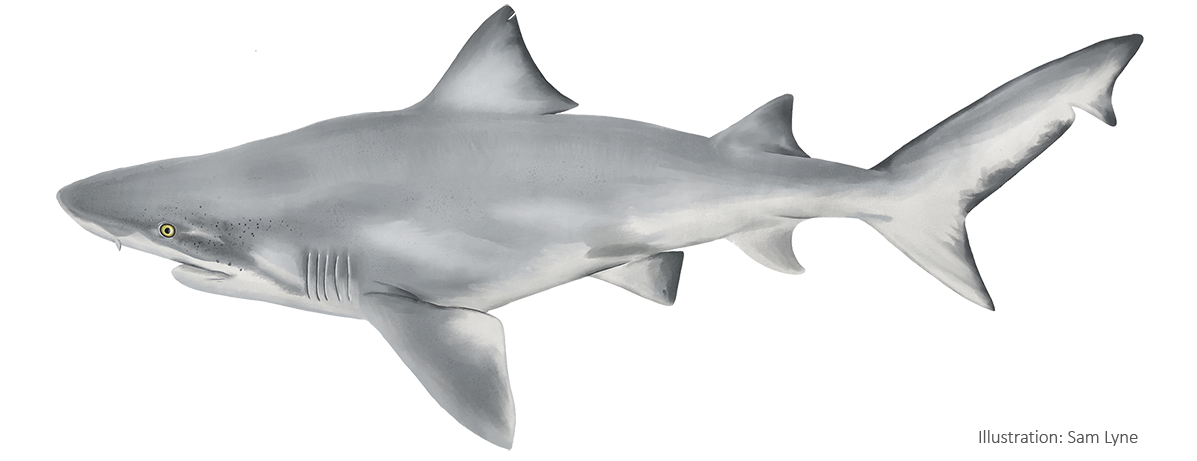
New research shows the Northern River Shark to be more wide-ranging than previously thought, with new populations documented in several northern rivers.
Northern River Sharks (Glyphis garricki) are found in brackish tidal rivers and estuaries of northern Australia and southern Papua New Guinea. They were listed as Endangered in 2001 under Australia’s Environment Protection and Biodiversity Conservation Act 1999 (EPBC Act) and are subject to a national recovery plan.
Marine Biodiversity Hub researchers encountered Northern River Sharks in 2013 during field studies for the National Environmental Research Program. They began targeted surveys in 2015 under the National Environmental Science Program, bringing together a team from Charles Darwin University, CSIRO, the Malak Malak Ranger Group, Dambi Rangers, Nyikina Mangala Rangers, Northern Territory Department of Primary Industry and Resources, and Murdoch University.
After many hundreds of hours of fishing, more than 600 individual sharks have been sampled in 11 rivers and estuaries across four different regions of Australia: from the Northern Territory’s Van Diemen Gulf and Daly River, to Cambridge Gulf and King Sound in Western Australia’s Kimberley region.
Four of the rivers and estuaries that host the Northern River Shark wind their way through Kakadu National Park and World Heritage Area to Van Diemen Gulf. Each of these rivers is a nursery area that provides essential protection for the Gulf population. Through this research, Kakadu has been highlighted as a site of global significance for the species.
The research dramatically increased understanding of Northern River Sharks, which a decade ago were known from only 32 records. Six additional rivers were added to the species’ previously documented range, and genetic analyses identified distinct populations in different river systems and enabled scientists to produce the first estimates of population size. These findings are invaluable to the effective management and conservation of Northern River Sharks, and to environmental assessments conducted under the EPBC Act in the context of northern Australia’s development.
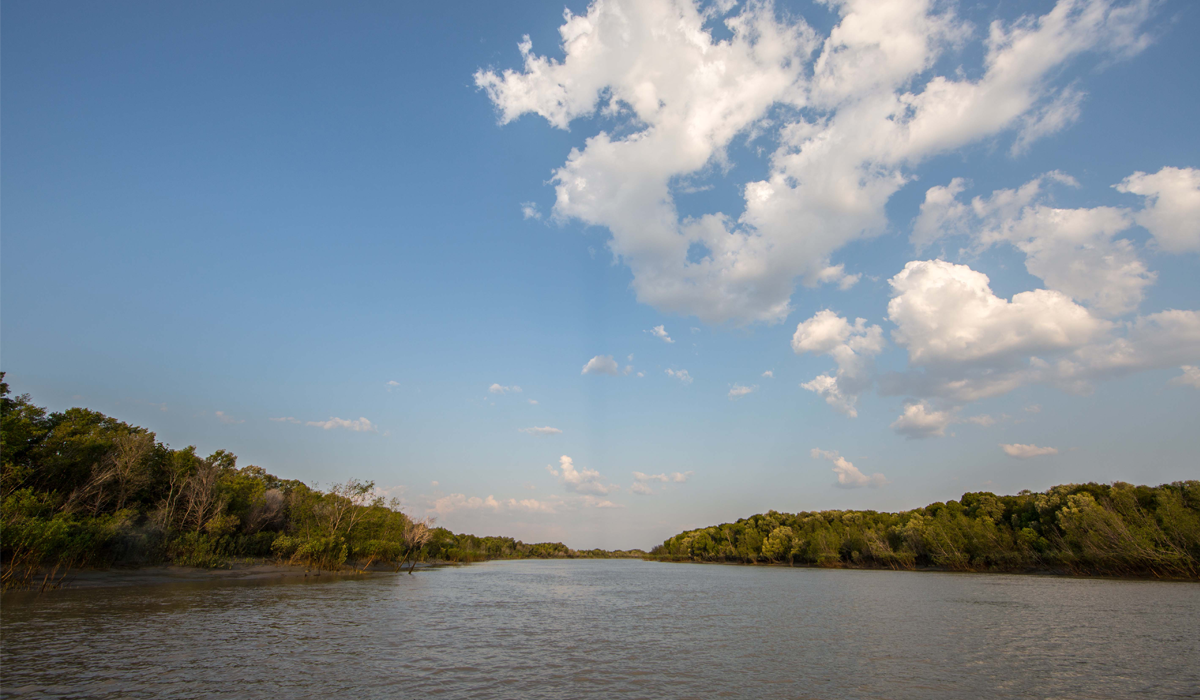
Close-kin mark-recapture
The sharks sampled during the field research were measured, sexed, photographed, tagged with a passive integrated transponder (PIT tag), and sampled for genetic material before being released at the site of capture. They ranged in length from 52 to 182 centimetres, and while most were juveniles or sub-adults, several adults were also recorded.
The sampling enabled researchers to map the distribution of Northern River Sharks in Australia, examine population structure, and apply close-kin mark- recapture (CKMR) to estimate population size. CKMR was developed for use with rare, poorly-known, and difficult to sample marine and aquatic species. It combines advanced genetics and statistical modelling, and works on the premise that the number of close-kin pairs in a population relates to the size of the population being estimated. Other Hub projects have used CKMR to estimate White Shark (Carcharodon carcharias), Grey Nurse Shark (Carcharias taurus), and Speartooth Shark (Glyphis glyphis) populations.
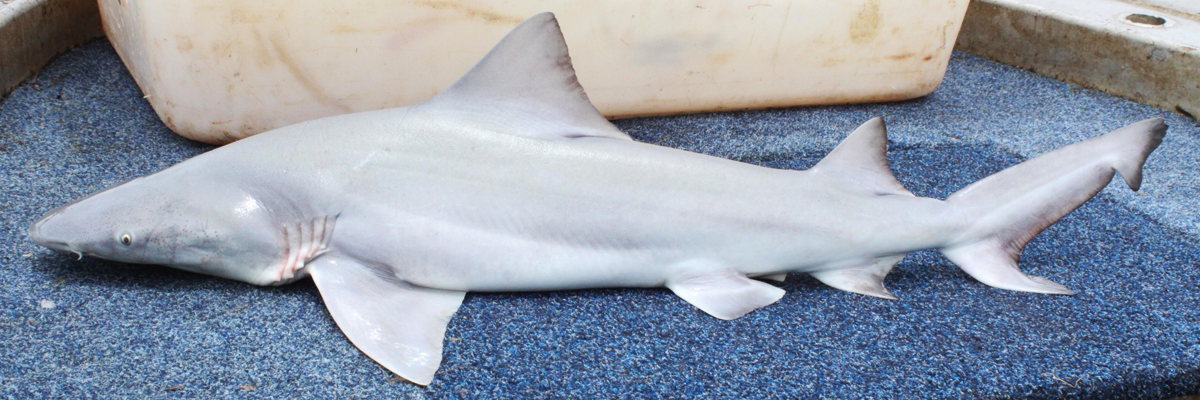
First estimates of population size
CKMR was used to estimate Northern River Shark population size in the Van Diemen Gulf region, where the highest levels of sampling were undertaken. Genetic analyses of ~350 samples identified 130 half-sibling pairs. This allowed an adult population size estimate to be produced for Van Diemen Gulf, which ranges from 582 to 1116 adults. Additional sampling of the Van Diemen Gulf population would enable determination of a population trend over time.
Although juvenile Northern River Sharks are locally abundant in these rivers – as indicated by the large overall sample size generated during the surveys – the adult population is small. This scarcity of breeding animals makes the species more susceptible to population decline; all adults are valuable in keeping the population stable.
Using the Van Diemen Gulf adult population size estimate, and accounting for the remaining known range of the species (Daly River, Cambridge Gulf, King Sound), the total Australian population size is estimated to be between 2,500 and 10,000 adults.
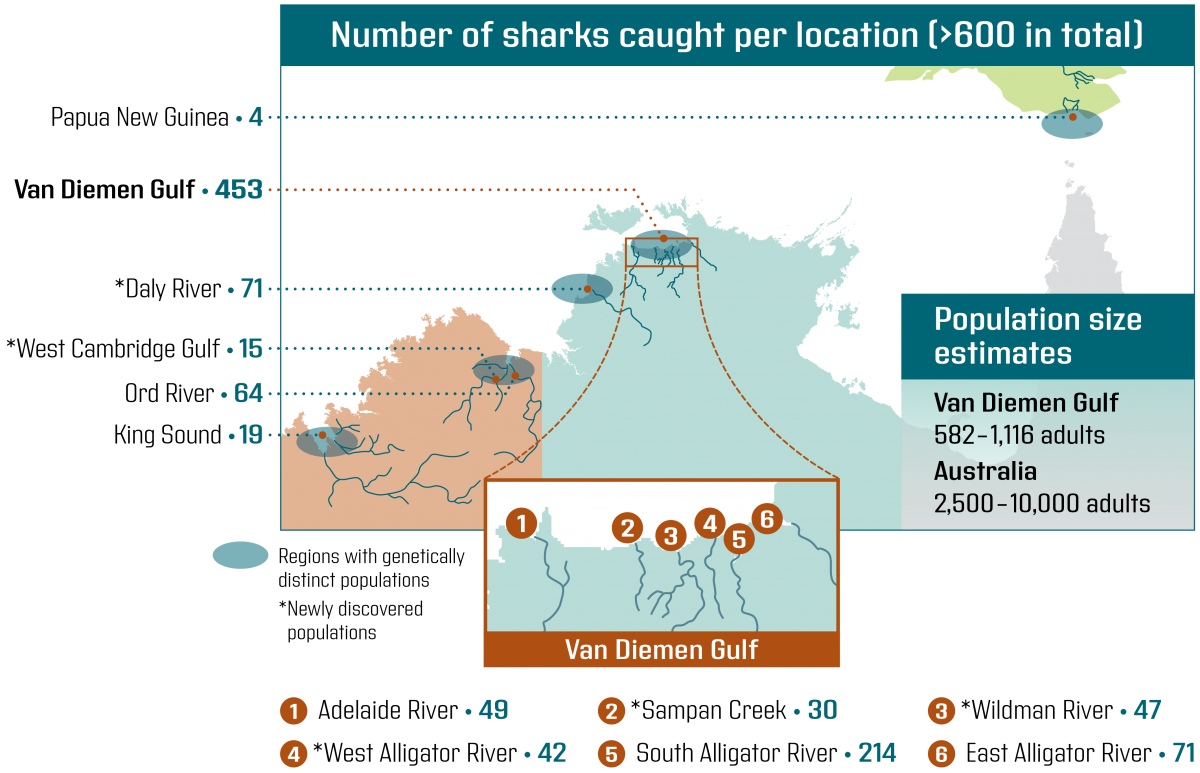
Migration between rivers, and what this means for management
Adult Northern River Sharks can move between riverine and coastal habitats. They have the capacity to breed with adults from other rivers, but this study has shown that migration rates between neighbouring populations are low; five genetically distinct populations were identified (see map above and 'The art of genetics' below). Large distances between habitable rivers effectively act as a barrier, causing populations to be largely self contained.
Isolated populations are more vulnerable because they cannot be repopulated via immigration if the current stock of adults is depleted. These isolated populations require careful monitoring of local and remote human activities that may degrade their environments.
Within Van Diemen Gulf, however, Northern River Sharks in each river have relatives in at least one other river, clearly indicating the intermingling of adults. But the mixing is incomplete. Sharks in the Gulf’s Wildman River in particular have very few relatives in other rivers, so this river may constitute an effectively isolated management unit.
Additionally, a high proportion of sharks within the Wildman River are closely related, suggesting the adult population there is extremely small. This is because a higher level of relatedness between sharks indicates fewer adults were around to share the breeding.
Evidence for ‘down-listing’
The new information generated by this research was incorporated into the species’ status assessment as part of the Marine Biodiversity Hub Shark Action Plan. The Shark Action Plan presents the status of all 329 sharks, rays, and chimaeras occurring in Australian waters.
The plan categorises the Northern River Shark as Vulnerable, one category lower than its current listing of Endangered under the EPBC Act. Thus, this synthesis of Hub research indicates a change from a ‘very high risk of extinction’ to a ‘high risk of extinction’.
The species is a sometimes caught in inshore gillnet fisheries as bycatch, and is subject to minor levels of Indigenous harvest, as well as illegal recreational take, inferring a projected continuing decline in the future. Further management will be required to minimise threats and secure the species’ status into the long term.
The art of genetics

Related information
- Northern River Shark fact sheet 2020
- Northern River Shark poster 2020
- Bravington, M., Feutry, P., Pillans, R.D., Hillary, R., Johnson, G., Saunders, T., Gunesekera, R., Bax, N.J. and Kyne, P.M. (2019). Close-Kin Mark- Recapture population size estimate of Glyphis garricki in the Northern Territory. Report to the National Environmental Science Program, Marine Biodiversity Hub. CSIRO Oceans and Atmosphere, Hobart.
- Feutry, P., Devloo-Delva, F., Tran Lu Y, A., Mona, S., Gunasekera, R.M., Johnson, G., Pillans, R.D., Jaccoud, D., Kilian, A., Morgan, D.L., Saunders, T., Bax, N.J. and Kyne, P.M. (2020). One panel to rule them all: DArTcap genotyping for population structure, historical demography, and kinship analyses, and its application to a threatened shark. Molecular Ecology Resources.
- Kyne, P.M., Heupel, M.R., White, W.T. and Simpfendorfer, C.A. (2020). The Action Plan for Australian Sharks 2020. National Environmental Science Program, Marine Biodiversity Hub, Hobart.
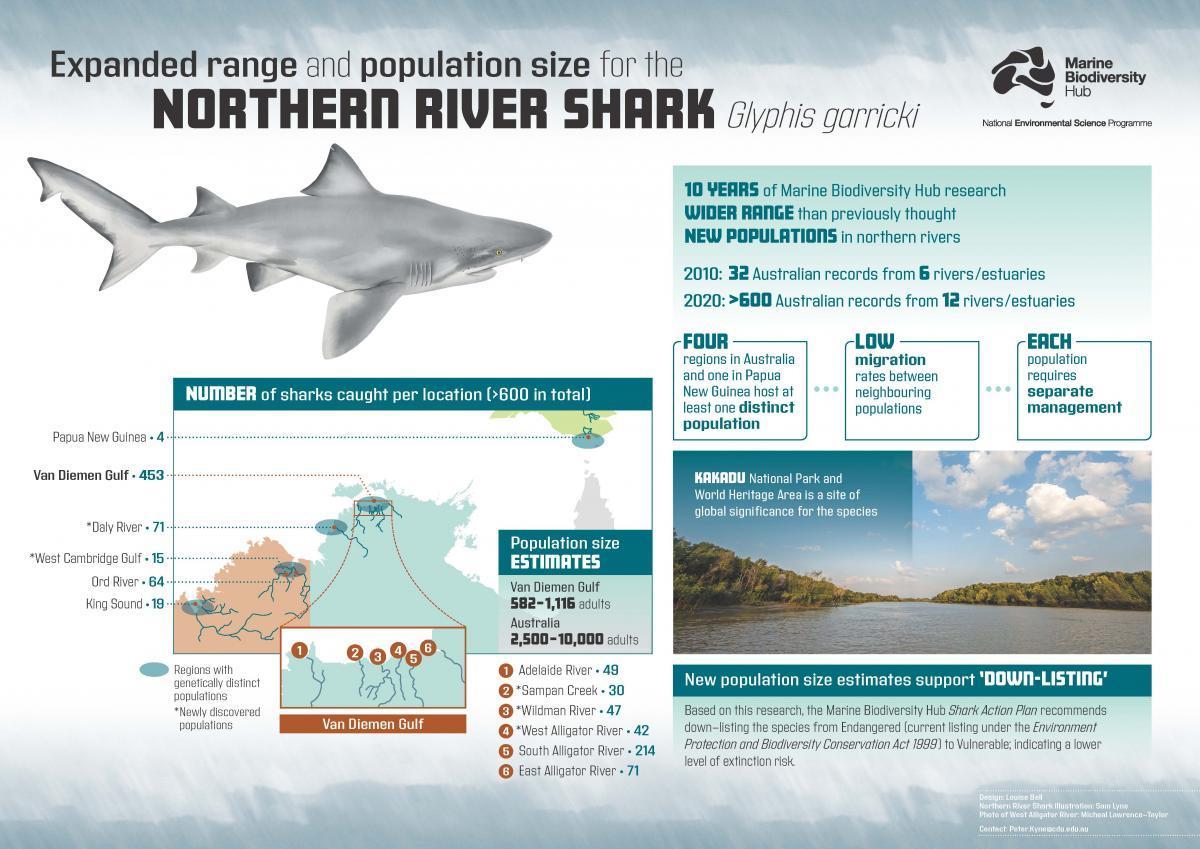
This A3 poster provides a summary of Hub research findings on the Northern River Shark.
- Log in to post comments
